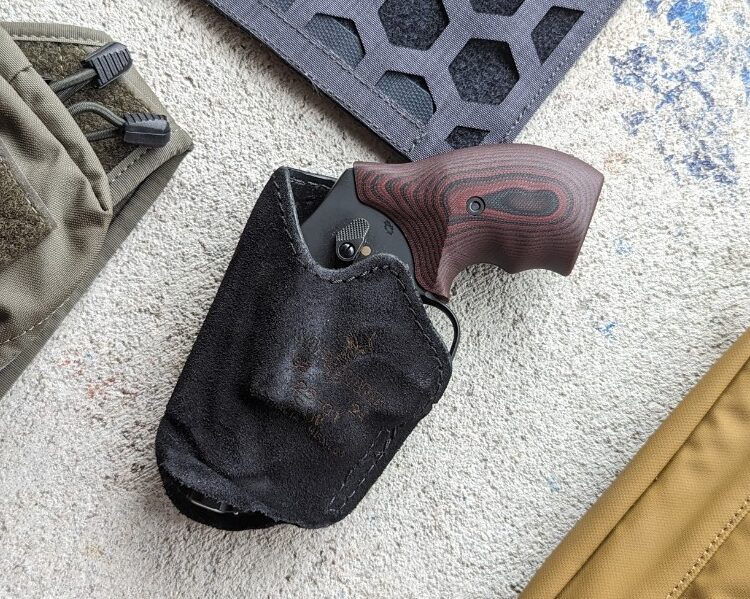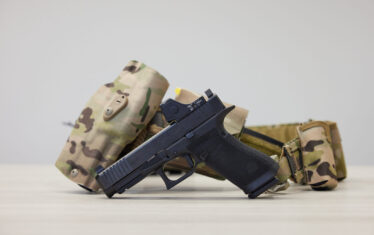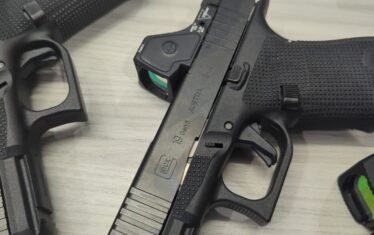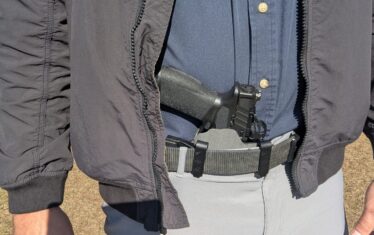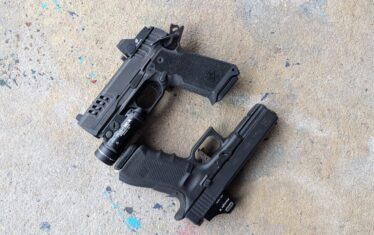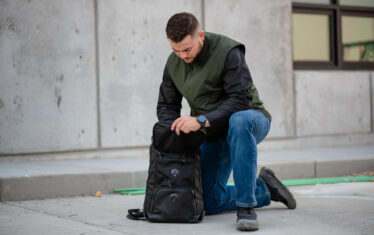Some laziness triggered my stumble into the world of pocket carry. I had begun to leave the house unarmed more often. Sometimes, I just didn’t want to strap on my P365XL. I’m just running to the store! It’ll be two minutes, and I’m wearing my hoochie daddy shorts. To carry the P365, I’d need a belt and pants.
That’s why pocket carry became my favorite new carry method. I tried a few holsters, and most are fine, but I’ve used the Safariland Model 25 as my primary pocket carry holster.
You might be thinking, “I’m reading this on the Safariland blog, and you work for Safariland, so of course you’ll love the holster.” I understand the clear conflict of interest, but if it makes you feel any better, I carried this rig before I worked for Safariland and purchased it with my hard-earned cash.
The Need For a Pocket Carry Holster
You might wonder why you even need a holster. Isn’t your pocket a holster?
Oh no, you sweet summer child. You need a holster if you choose to carry a gun in your pocket. Your pocket doesn’t offer the trigger protection needed to carry a gun safely. It’s too easy for something to get into your trigger guard and fire the gun.
Safety is the primary reason why we need a pocket holster, but it isn’t the only reason.
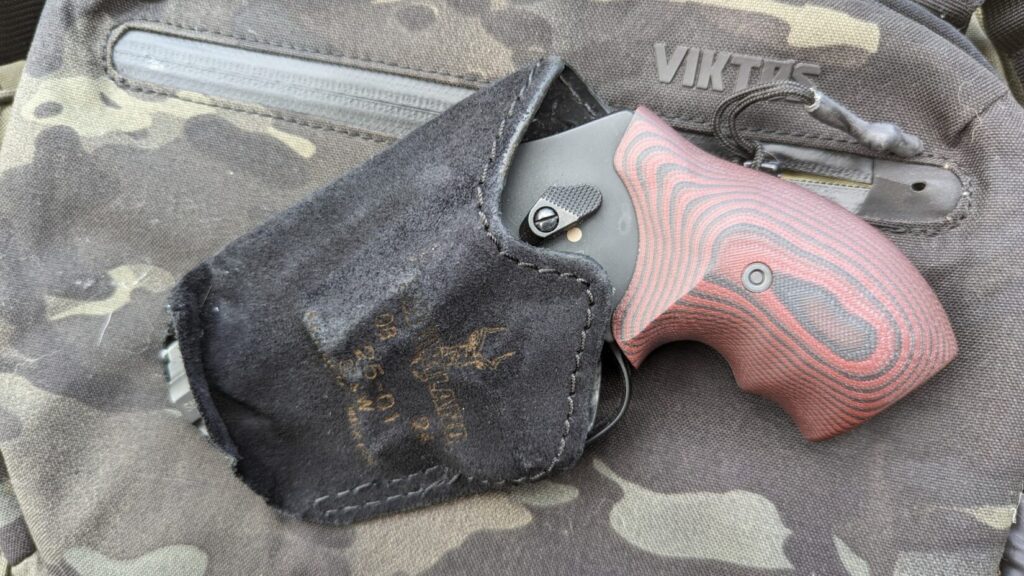
A pocket holster ensures your gun remains oriented for easy access and a quick draw. When you reach into your pocket, the gun’s grip should be in the same position every time.
A pocket holster also protects the holster from the majority of gunk in your pocket. Guns are mechanical, and gunk and gremlins are the main opponents of mechanical objects.
the Safariland Model 25 Pocket Holster
I decided to buy the Model 25 based on Safariland’s reputation. At first glance, the holster didn’t seem to stand out. I thought it was a simple leather pouch, but I had a J-Frame, and the Safariland reputation was built on fantastic holsters. So, I snagged one.
The Surprising Design
Imagine my surprise when I realized it wasn’t leather at all. Instead, it feels like Kydex that’s wrapped with suede.
The hard polymer inner layer is molded to the firearm, which was a nice surprise. Molded polymer holsters dominate the market for a reason. The Model 25 conforms to my gun, making for a better fit. Molded holsters offer you a few small advantages you might not notice.
For one, the trigger remains completely covered, which is a big safety concern. The grip is easily accessible, and the holster doesn’t ride too high or too low on the grip. My J-Frames drop in smoothly and don’t require you to push the gun into the holster. A proper fit ensures the holster doesn’t cling to the gun as you draw and come out of the pocket with your gun.
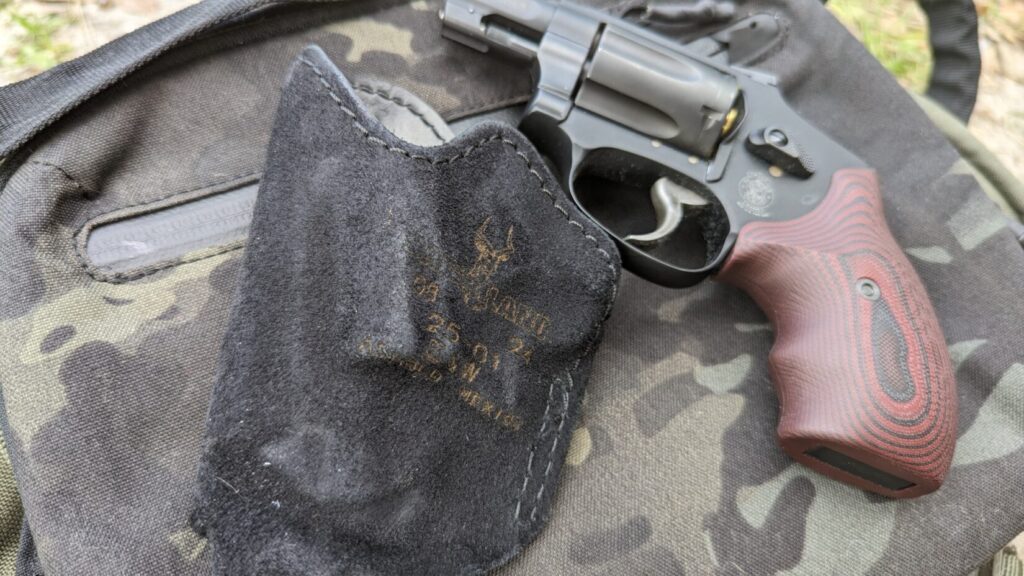
The suede finish keeps the holster from poking or prodding you and creates a little internal friction to keep the holster locked into your pocket. Safariland installed a membrane layer in the rig to keep your sweat from reaching the gun, which is another nice feature.
Training With the Model 25
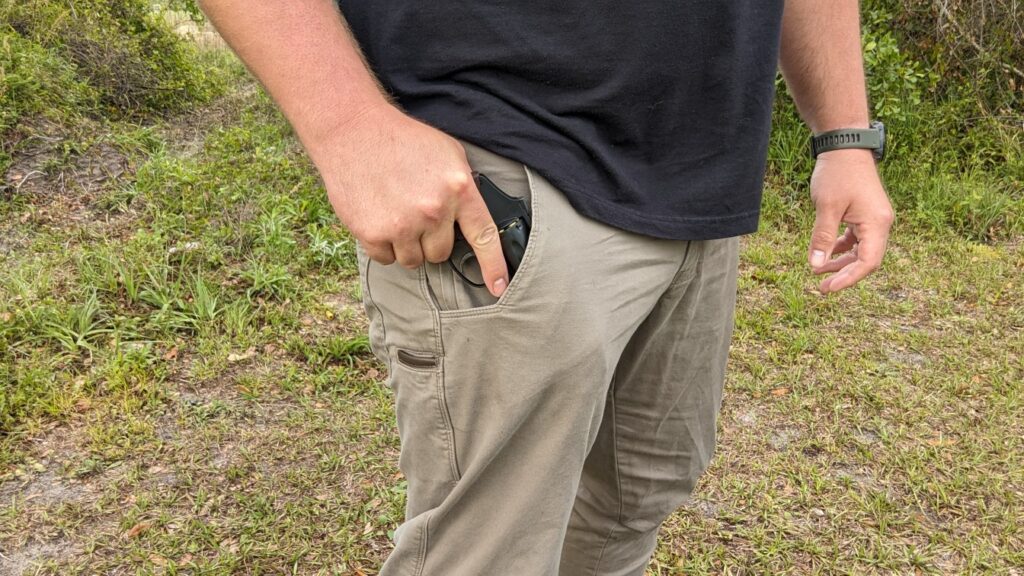
When I switched to a pocket holster, I had to reset my training to include a pocket carry draw alongside my IWB draw. It’s clearly a different type of draw and requires a good bit of practice to master.
I learned that there are two types of pocket draws.
The first is the standard draw. Your hand starts outside of the pocket, and on the signal to draw, your hand dives into your pocket. You then grab the gun, draw the gun, and get it in action. I practiced this over and over with both live and dry fire. At this point, I can draw and put one shot on an IPSC A-Zone in about 1.6 seconds.
The second is the staged draw. With the staged draw, we discover one of the biggest benefits of pocket carry. If your spidey senses are tripped, you can simply put your hand in your pocket and get a grip on your gun. No one knows you’re gripping a gun and readying to use it.
The staged draw is much faster, and I can draw and deliver a shot on target in less than a second.
Smooth Draw
The rigid design and open face of the Model 25 make drawing the gun smooth. It pops right out without any resistance or friction.
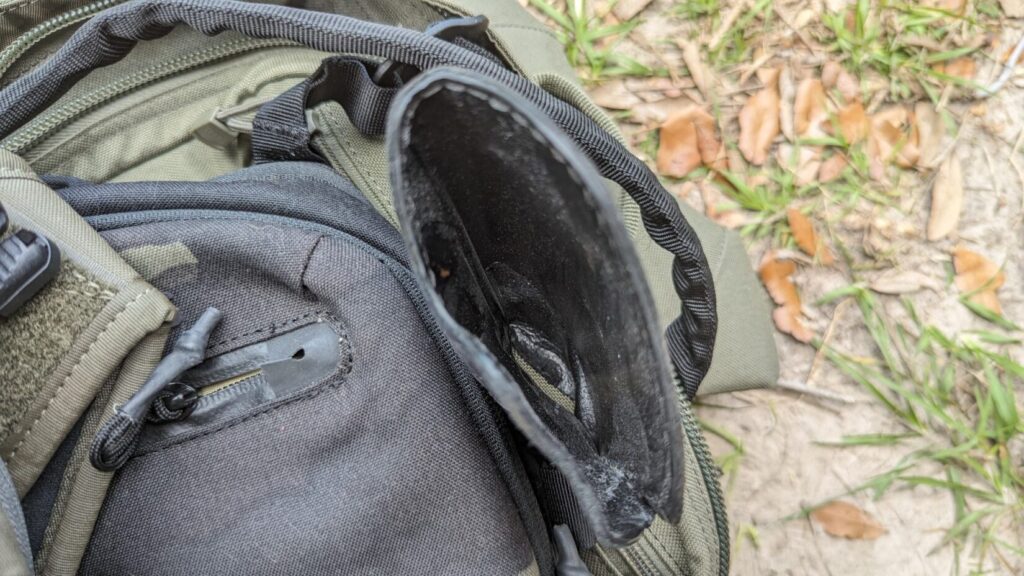
One of the key parts of the draw is to make sure you don’t pin the gun to the holster as you draw.
When I started practicing the draw, I found that my thumb would pin the holster to the gun every so often, and the holster would come out with the gun. With practice, I learned to keep a loose thumb until the gun left the holster.
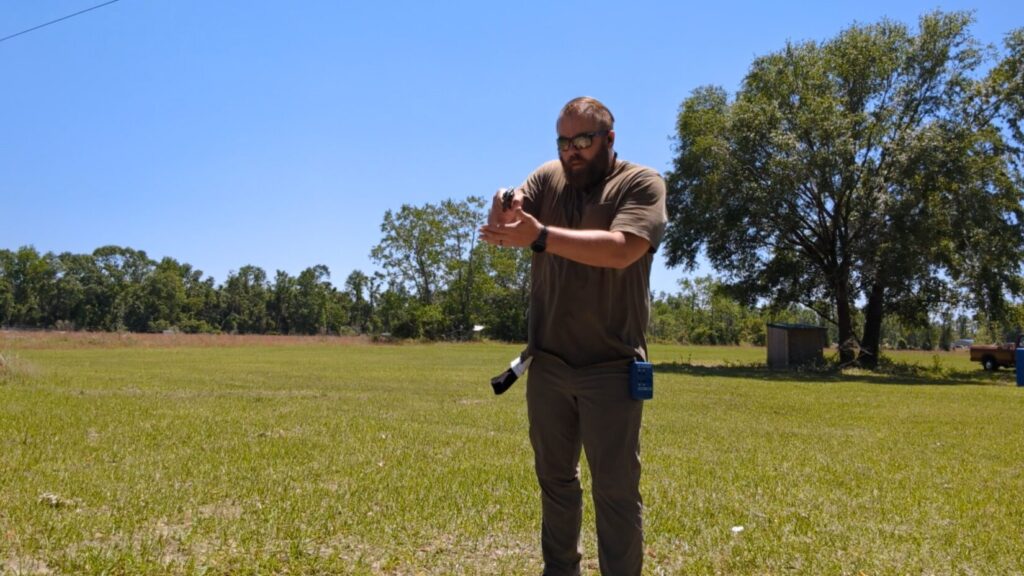
The Bill Drill
I used the Bill Drill as a testing point for me and the Safariland Model 25.
The Bill Drill is easy. You stand seven yards from the target — an IPSC A Zone. At the signal, you draw and fire six rounds as fast and accurately as you can into the target.
I did multiple Bill Drills with my Model 25, and S&W 432 UC and practiced both staged draws and full draws.
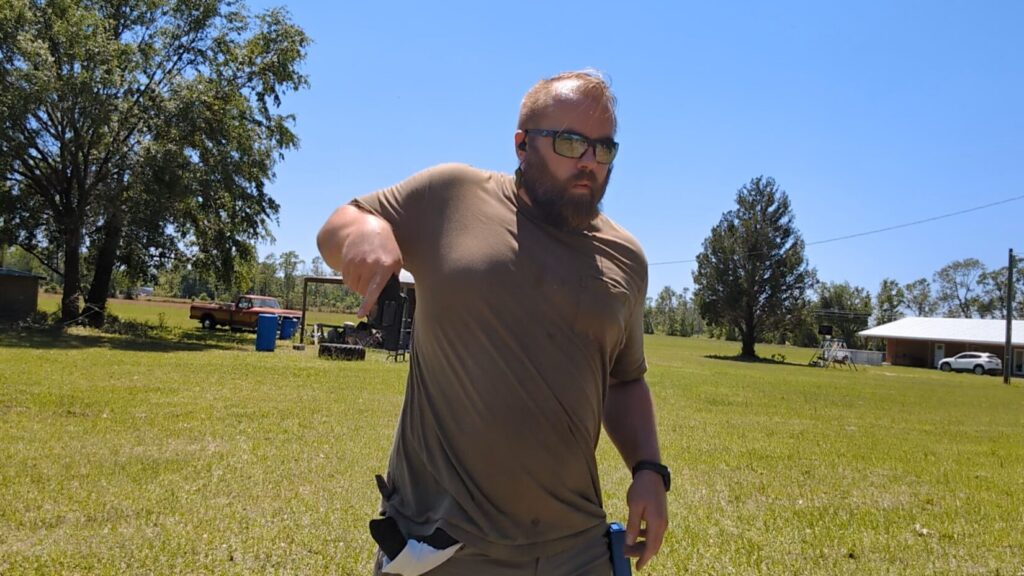
With the staged draw, I shot a 2.08-second Bill Drill. A perfect time would be under two seconds. I’m chasing that time with the staged draw.
The full draw resulted in a 2.7-second Bill Drill. That’s a noticeable increase in time, but it is to be expected. A full pocket draw isn’t nearly as fast as an IWB draw.
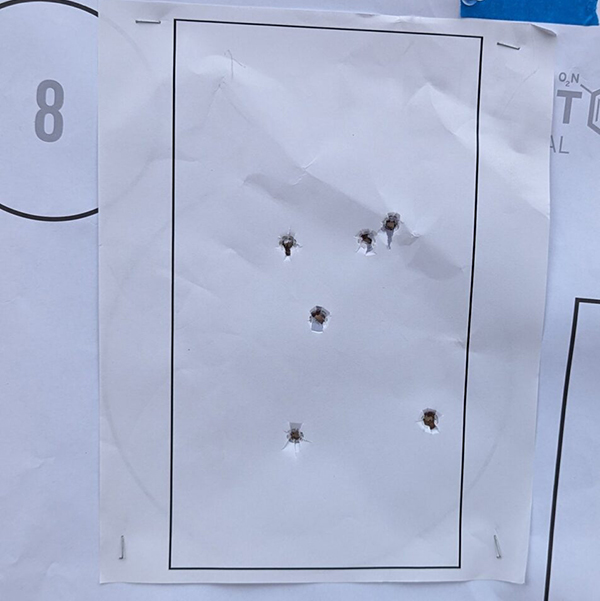
This drill had me chasing the timer and moving fast, and I still didn’t have problems deploying the gun from the holster. All that practice with a loose thumb paid off.
Carry Everyday
The Safariland Model 25 and a lightweight revolver ensure I’m always heeled. I don’t have an excuse, even when wearing my silkies. If a pocket is present, then I can be prepared to defend myself.
The Model 25 was a nice surprise with an innovative design for pocket carry. It’s also an affordable option. I can see myself and this holster being friends for a long time to come.





